Above Picture from Robyn Lambird’s Instagram
When YouTube first became popular, it was mainly used to post random, silly videos that you hoped would go viral (remember Charlie Bit My Finger?). Now, it’s so much more— including a platform for the disabled and chronically ill to spread awareness of the hardships they go through. YouTube gives them a way to tell their multidimensional stories and to fight the stigma against handicapped people.
Many people with chronic pain and invisible disabilities hide in the shadows, going unnoticed by everyone around them. We get judged because we don’t look sick or disabled, so no one takes us seriously.
That’s why so many have turned to YouTube to teach the world that not every problem is visible, that others shouldn’t make assumptions based on appearances. Those who decide to share their not-so-normal life on the video-sharing site have a range of different disabilities and illnesses, which doesn’t always include mobility problems (for example, the blind Molly Burke, or Nikki Lilly who has AVM). Most of the time, you wouldn’t even be able to tell that the vlogger is disabled or living with a chronic illness.
One such YouTuber, Annie Elainey, who has Ehlers-Danlos syndrome, posts many videos talking about the misconceptions disabled people face because they don’t look sick. In her video “How To Spot a Fake Disability” (Spoiler: you can’t!), she said that “disabled people face a lot of harassment because of this misconception that there is some kind of epidemic of people faking disabilities.”
I can’t tell you how many times I received glares or rude comments for using an elevator. They don’t see my chronic hip pain.
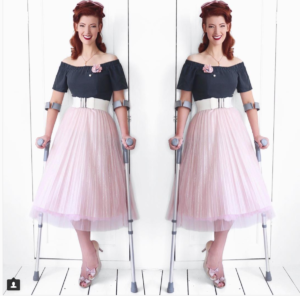
When UK TV presenter, producer, and author Jessica Kellgren-Fozard was a contestant on BBC’s Britain’s Top Missing Model, she received a lot of backlash because she didn’t look handicapped. In her blog, she states that there was a lot of talk about visible vs. invisible disabilities and apparently, her deafness and illnesses didn’t make her disabled enough. While she did not win, she wrote on her website that the experience inspired her to “…start making some videos about what it’s like to have a disability that people can’t see. What it’s like to be me.”
She posts those videos on her YouTube Channel “Jessica Out of the Closet” and her more than 256,000 subscribers love watching her videos about her life as a deaf, gay (and happily married!), blind-in-one-eye, cheery, 29-year-old Brit with HNPP and MCTD. Her can-do positive attitude is inspiring—considering her life is far from easy—but she makes the best of it and lets those with illnesses/disabilities know that they are not alone.
I reached out to Kellgren-Fozard about the increase in disabled YouTubers.
“There have always been disabled YouTubers, it’s merely that people are paying attention now,” Kellgren-Fozard said.
YouTube has been around for 13 years and now, these disabled YouTubers are getting the spotlight and spreading awareness.
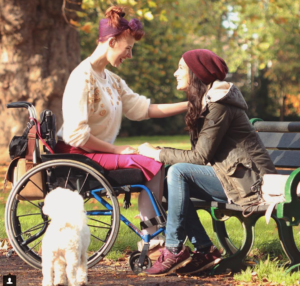
“The internet is wonderful for giving a voice to marginalised people and providing amazing employment opportunities for people who would struggle otherwise,” Kellgren-Fozard said.
Her YouTube channel has made her successful—even on days she can’t get out of bed.
Another disabled YouTuber who also has trouble with mobility is the Australian Robyn Lambird. Lambird has cerebral palsy and started uploading videos documenting her life after her Tumblr followers kept asking why she was in a wheelchair.
“I wanted to create a space where young people could discuss their disabled identity and what it meant for their lives,” she told me.
While all these YouTubers are documenting their lives, they are also learning about other people’s struggles. It’s all about starting a dialogue.
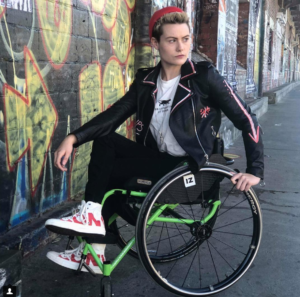 One of those dialogues is about wheelchair use as a positive concept. Lambird chose to get a wheelchair because it gives her the freedom to be more mobile and put herself in less pain, as walking can be strenuous. It seems to shock people when someone in a wheelchair gets up, like it’s some miracle, or they assume the user faked it. Kellgren-Fozard and Elainey have made the same type of awareness videos, as have many others since it is a recurring misconception.
One of those dialogues is about wheelchair use as a positive concept. Lambird chose to get a wheelchair because it gives her the freedom to be more mobile and put herself in less pain, as walking can be strenuous. It seems to shock people when someone in a wheelchair gets up, like it’s some miracle, or they assume the user faked it. Kellgren-Fozard and Elainey have made the same type of awareness videos, as have many others since it is a recurring misconception.
I asked Lambird what she wants her account to accomplish.
“I hope my channel is a step towards normalising disability and showing people that they are not alone in the struggles related to it,” Lambird said. “I also hope to shine a more positive light on living with a disability than is usually seen in our media.”
The media and movies/shows tend to show disabilities as the worst thing that could possibly happen. While they are improving little by little, there is still a long way to go when it comes to awareness.
The way to make people aware of disabilities and chronic illnesses is to talk about it. Society tends to get uncomfortable about such topics but that is entirely on them as the majority of the disabled community is fine with discussing their life. They turn to YouTube because it’s a place where people will actually listen to them and maybe even spread on the message.
These disabled YouTubers attract viewers with disabilities or chronic illnesses, who like to see someone like them, but they also attract abled viewers who get inspired or want to learn more about this community. The more people know, the less afraid they will be. Whether we are deaf, blind, in a wheelchair, or have medical problems, we are still human. Just accommodate us and treat us normally—that’s all we ask.
You can find Jessica Kellgren-Frozard on YouTube,Tumblr, Facebook, Twitter, Instagram, Annie Elainey on YouTube, Tumblr, Facebook, Twitter, Instagram, Robyn Lambird on YouTube, Tumblr, Twitter, Instagram Molly Burke on YouTube, Facebook, Twitter, Instagram, and Nikki Lilly on YouTube, Facebook, Twitter, Instagram

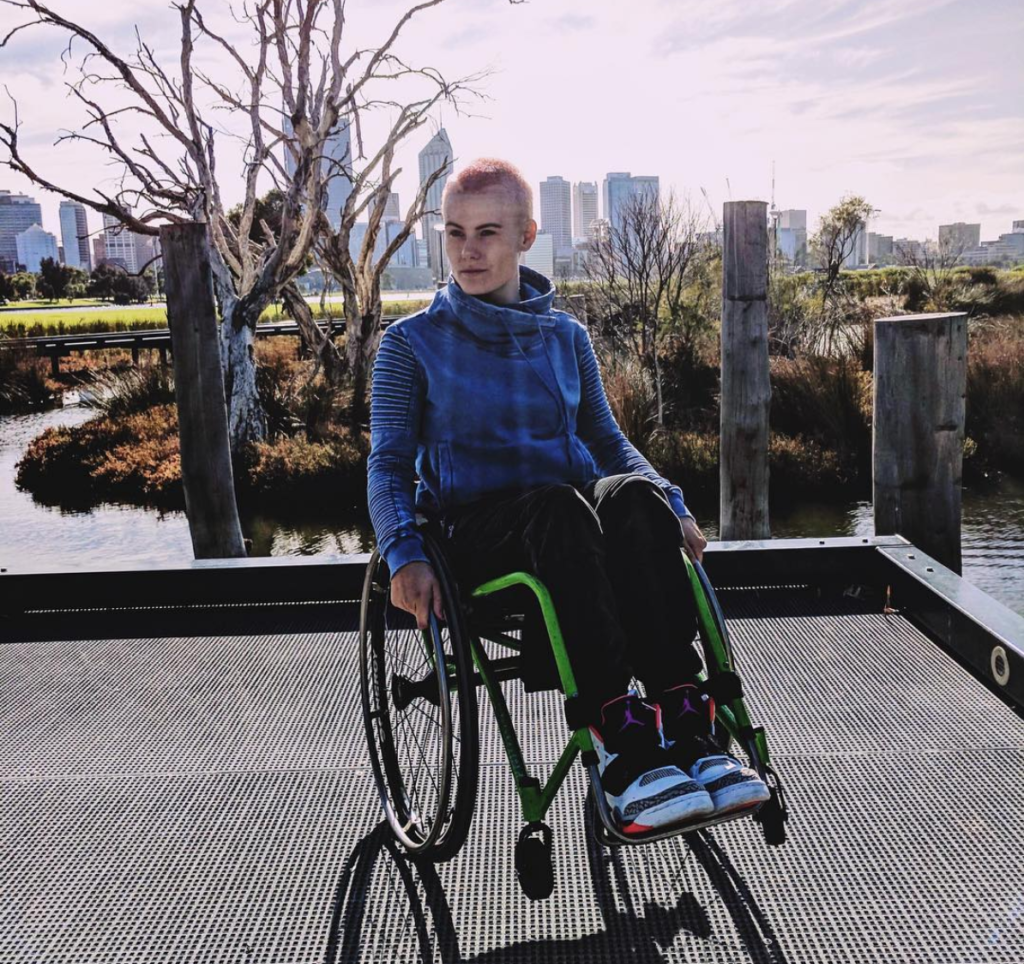
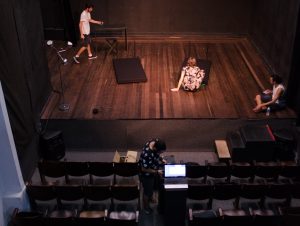

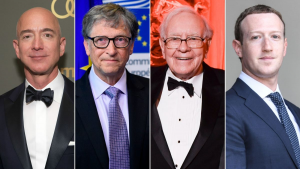
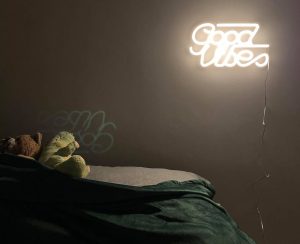

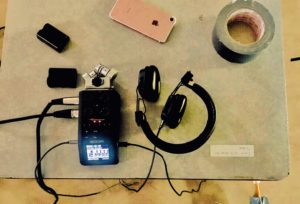




Be First to Comment